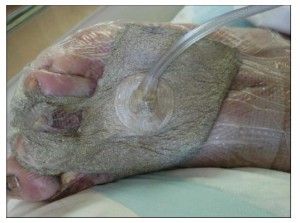The following was taken from the April 2012 Salisbury Fire Department Newsletter. You will be absolutely amazed at it’s contents. Don’t miss reading a word of this posting, YOUR LIFE MAY DEPEND UPON the knowledge you gain from reading this posting.
Energy-saving Bulb Dangers
By Lt. James L. JesterBy now, we have all seen them. We probably all have some in our homes. We most certainly have come into contact with them in the homes to which we respond. I am talking about energy-saving light bulbs. They have many different names; compact fluorescent lamp (CFL), compact fluorescent light, and compact fluorescent tube, all describe a fluorescent lamp designed to replace an incandescent lamp. Compared to their incandescent brothers producing the same amount of visible light, CFLs consume less power (from 1/5 to 1/3) and have a longer service life (8 to 15 times).
But the news in our quest to be better stewards of our planet is not all good. These CFLs have a small electronic ballast in their base. There is a fire hazard associated with these ballasts, but that is a conversation for another day. Let’s talk about another danger posed by these “green” lamps: mercury exposure and poisoning.
Like all fluorescent lamps, CFLs contain mercury. This fact not only complicates their disposal under normal conditions, the problem is exacerbated when the lamp is broken and the mercury is allowed “out of its box.” The symptoms of mercury poisoning typically include sensory impairment (vision, hearing, and speech), a lack of coordination, skin discoloration, tingling, itching, burning or pain, and desquamation (shedding of skin).
Mercury in lamps is typically present as either elemental mercury liquid, vapor, or both, since the liquid readily evaporates at room temperature. When broken indoors, lamps may emit sufficient mercury vapor to present health concerns. Breakage of multiple lamps presents a greater concern. Injection of mercury into the body through broken glass that is contaminated is of particular concern.
Here is the scenario:
You are dispatched to The Smith residence for a laceration to the foot. Routine run huh? Nope. What you were not told is that Mr. Smith uses CFL lamps in his home. One of those lamps burned-out, and Mr. Smith did not wait for the lamp to cool down before he stood on a chair and removed it. Because the lamp was hot to the touch, Mr. Smith dropped it. As the lamp hit the floor, it exploded. As Mr. Smith descended from the chair he stepped, barefooted, into the broken glass and exposed mercury.
Here is what Mr. Smith’s foot looked like during his 2-week stay in ICU:
~~GRAPHIC IMAGES REMOVED ... Please visit the link below to view..~~
At one stage it was feared that his foot would need to be amputated. Currently his foot is connected to a vacuum pump to remove continuously dead tissue.

The following are the recommended actions to take in the event of a broken CFL.
- Evacuate the room, taking care not to step on the broken glass littering the floor
- Ventilate the room for a MINIMUM of 15 minutes (EPA recommendation)
- DO NOT clean the debris of the broken lamp with a vacuum cleaner as this will spread toxic mercury droplets throughout the house either immediately or upon the future use of the vacuum
- Don protective gloves (I’ll be the one in SCBA too!); use a broom or brush to sweep the debris into a dustpan; empty the contents of the dustpan into a plastic bag; seal the plastic bag
- DO NOT dispose of the plastic bag into an ordinary refuse receptacle
- The debris is lawfully a Hazardous Material and must be disposed of accordingly
For a downloadable copy of this article, click this link Salisbury_Fire_Dept_Training_Newsletter_-_April_2012
No comments:
Post a Comment